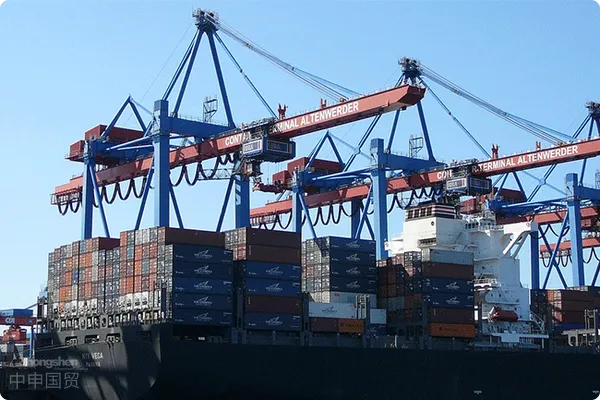- Shanghai Zhongshen International Trade Co., Ltd. - Two decades of trade agency expertise.
- Service Hotline: 139 1787 2118

Contents
ToggleElectromechanicalEquipment ImportsCurrent status of the three major industries
The global trade volume of electromechanical products is projected to exceed $8 trillion by 2025, with China accounting for 23% as the largest import market. However, enterprises generally face the following challenges when conducting self-operated imports:The deviation rate of HS code classification exceeds 40%.,The technical certification failure rate is as high as 35%.,The proportion of logistics costs exceeding the budget has reached 28%..
Common Risks in Self-Operated Import Business by Enterprises
- Tariff Misjudgment Risks
- A German machine tool incurred an additional tax payment of 870,000 yuan due to an incorrect HS code classification.
- U.S. laser equipment incurs a 20% punitive tariff due to origin determination discrepancy.
- Technical barrier risks
- Please translate the following Chinese into English: New EMC Directive 2025/32 requirements added to EU CE certification.
- The scope of Japan's PSE certification has been expanded to include the industrial robot sector.
- Hidden cost risk
- The daily maximum demurrage fee at Shanghai Port reaches up to 3,800 yuan per container.
- The additional charge for special equipment transportation can account for up to 35% of the total freight cost.
The value realization path of professional agency services
Taking the import of a German stamping production line by an automotive parts manufacturer as an example:
- Pre - preparation Stage
- Complete3CConfirmation of non-catalog certification, saving 280,000 yuan in testing costs.
- The accuracy rate of the 8-digit pre-classification HS code is 100%.
- Customs Clearance Execution Phase
- Utilizing the tariff reduction rules of the free trade agreement saved 427,000 yuan in tariff costs.
- Coordinate priority berthing at ports to reduce vessel turnaround time by 3 working days.
- Follow-up management phase
- Establish a fast-track channel for spare parts import, reducing customs clearance time by 60%.
- Complete the archiving of 5-year customs audit traceability data.
Core indicators for selecting agency service providers
- Verification of professional qualifications
- AEO Advanced Certified Enterprises Preferred
- Possess customs clearance qualifications in at least 5 major trading countries.
- Service Capability Assessment
- Timeliness of Technical Standards Database Updates
- Emergency response plan activation time (recommended ≤2 hours)
- Cost - control system
- Tariff Guarantee Insurance Alternative to Cash Deposit Scheme
- The port relationship network covers major hub ports.
Industry Trends and Corporate Response Recommendations
The second phase of RCEP tariff reductions to be implemented in 2025 involves 217 machinery and electrical tariff lines. It is recommended that enterprises:
- Establish a full life cycle management system for imported equipment.
- Select an agency service provider with experience in applying for advance rulings.
- Conduct regular reviews of the trade compliance system (recommended quarterly).
| Project | Self-operated import | Professional agency |
| Document Error Rate | 18% | ≤ 3% |
| Clearance time efficiency | 5-7 Days | The ACI declaration system has strict requirements |
| Total costs | Reference value | Reduce by 22% |
Related Recommendations
? 2025. All Rights Reserved. Shanghai ICP No. 2023007705-2  PSB Record: Shanghai No.31011502009912
PSB Record: Shanghai No.31011502009912










